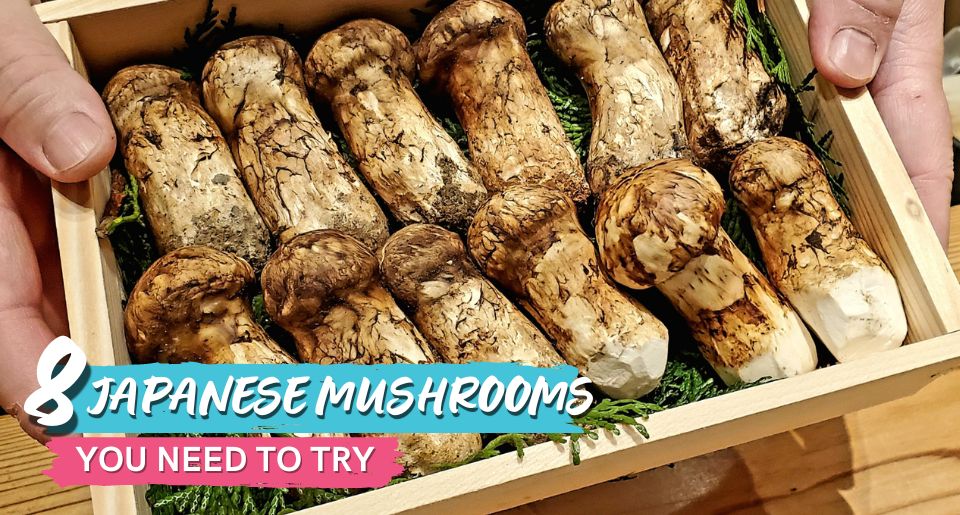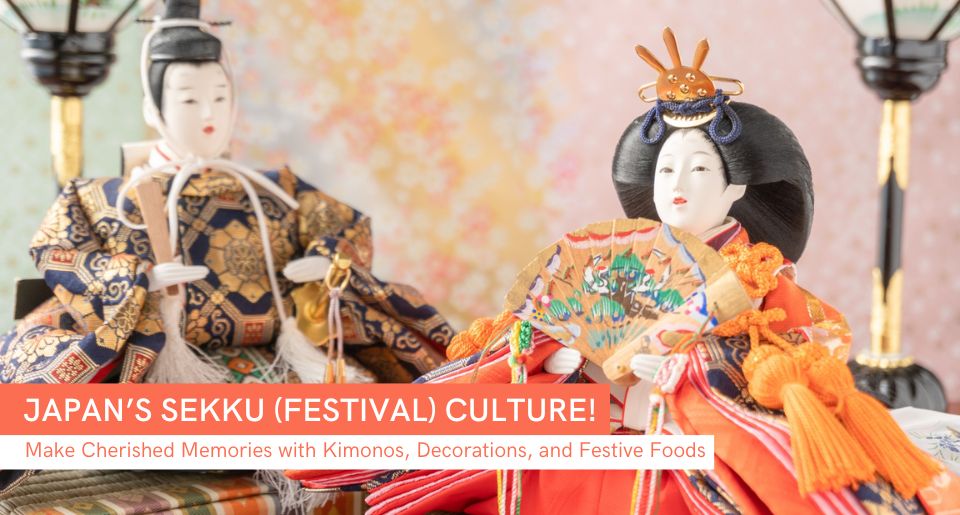Contents
Introduction
Japan has cherished mushrooms (“kinoko” (キノコ) in Japanese) as an autumn staple for centuries, and it's easy to see why – their distinctive aroma, flavor, and fragrance, combined with their exceptional nutritional properties, make them stand out. These fantastic fungi have been shown to be beneficial in reducing the risk of cancer, providing an excellent source of vitamin D, promoting lower cholesterol levels, lowering sodium intake, protecting brain health, stimulating a healthier gut, and supporting a robust immune system.
Mushrooms also carry deep symbolism in Japan, symbolizing fertility, transformation, new beginnings, and rebirth, as well as signifying good health and longevity. But beyond their symbolic value, they hold a special place in the hearts of the Japanese for their diverse and delightful taste experiences, with each mushroom variety offering a distinctive taste that never fails to leave taste buds satisfied.
So, let's take a closer look at the most cherished mushroom types that you’ll most likely see on Japanese tables (and should definitely be on your table too!).
Shiitake (椎茸)

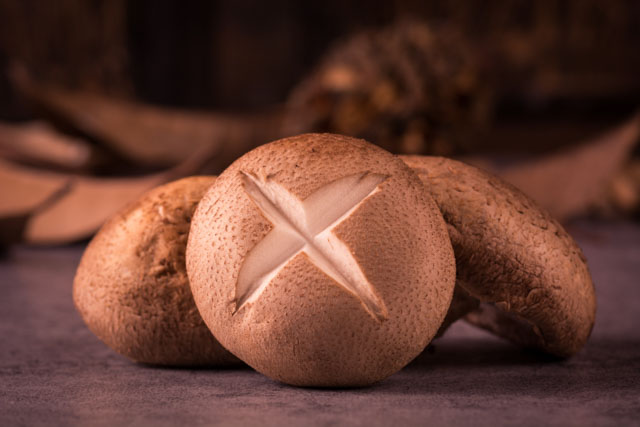
Shiitake mushrooms. The cut cross on the top is common way to prepare them.
When it comes to Japanese cuisine, Shiitake mushrooms reign as the most popular choice, both domestically and internationally. These appetizing fungi are all about the flavor – boasting a robust, earthy, umami taste that delivers a pleasurable experience. And the best part? They’re renowned for their satisfying meaty, chewy texture that feels just right in your mouth!
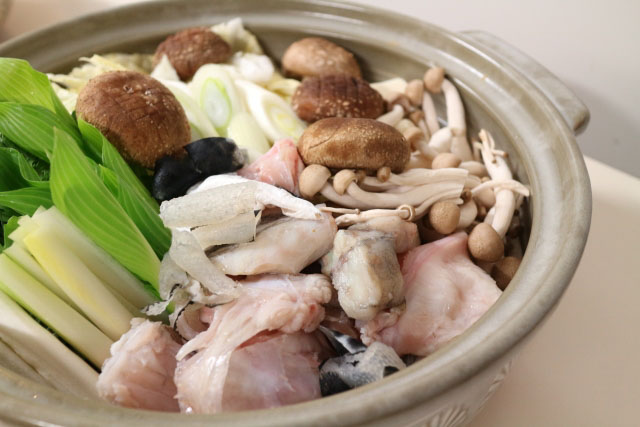
Shiitake in a Japanese nabe dish (hot pot).
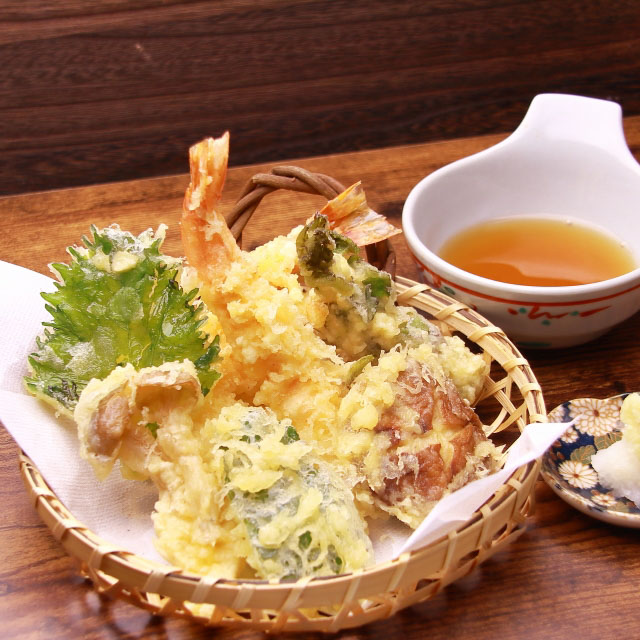
Tempura shiitake, to the right in the basket, the standard cross cut slightly visible.
You can readily find them fresh, but dried Shiitake mushrooms are equally popular – after dehydration, their flavors become even more intense, and a quick soak in water revives their magnificence before incorporating them into your dishes. From nabe (hot pot) delicacies to comforting boiled dishes and crispy tempura, Shiitake mushrooms take center stage in a diverse array of delightful Japanese culinary creations.
Maitake (舞茸)
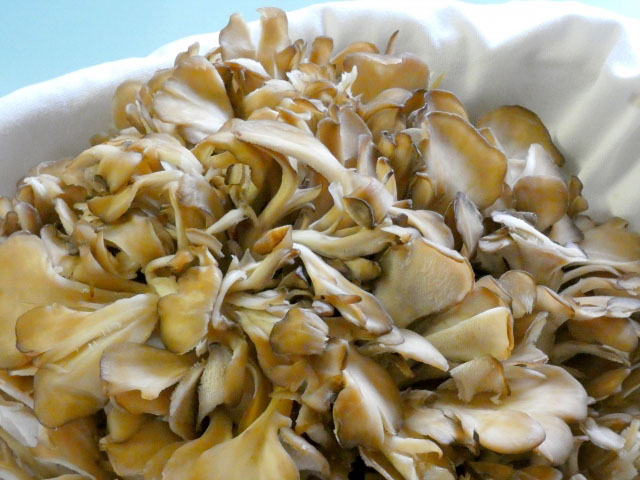
Maitake mushrooms are famous for their healing power.
Japanese cuisine has a soft spot for Maitake mushrooms. In fact, the name "maitake" translates to "dancing mushroom" in Japanese. Legend has it that people danced with joy upon stumbling upon this marvelous mushroom in the wild, owing to its remarkable healing properties.
Often referred to as the king of mushrooms, Maitake mushrooms grow in large colonies. These fungi can be found in the wild across parts of Japan, typically flourishing at the base of Elm, Oak, and Maple trees. While it's possible to cultivate them and even grow them at home, their true magic is best witnessed in their natural habitat.
Matsutake (松茸)
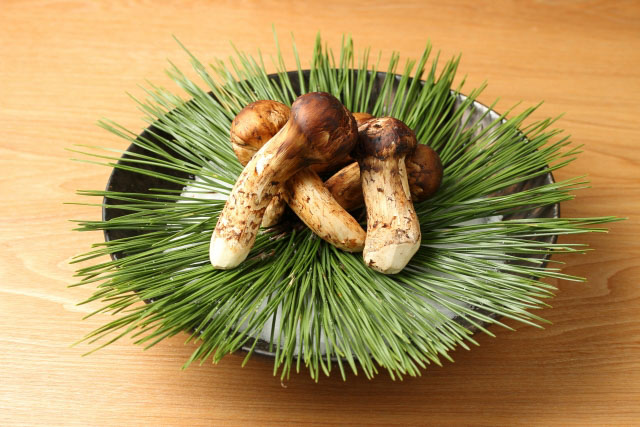
Matsutake is a delicacy among Japanese mushrooms.
Renowned as a luxurious and highly sought-after gourmet delicacy, Matsutake mushrooms are truly unique gems that can't be cultivated, making them an exclusive autumn treat. These highly prized fungi are found under pine trees, known as “matsu” (松の木), and the prime time to harvest them is just before surfacing, with the umbrella still tightly closed.
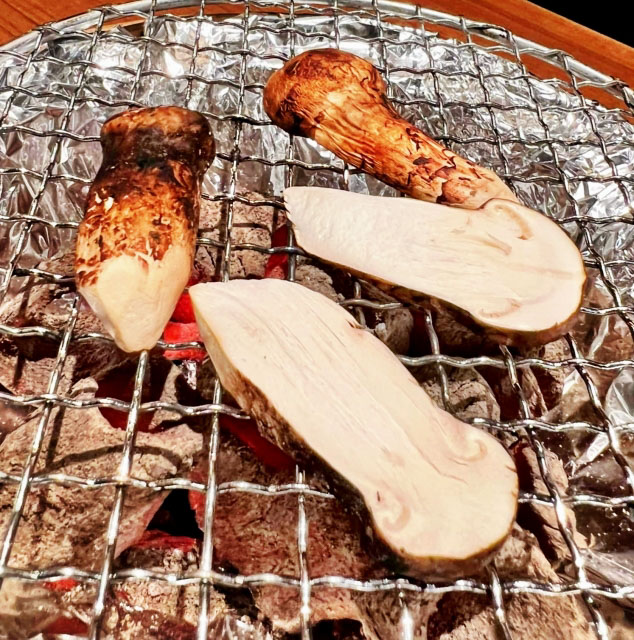
Grilling the Matsutake over charcoal is a popular way to eat these mushrooms.
Matsutake mushrooms boast an exquisite blend of a strong, enticing aroma, coupled with earthy and spicy notes that create a perfect symphony of flavors. The Japanese recognize their richness in both flavor and fragrance, often keeping the recipes for Matsutake mushrooms simple and refined to allow their essence to take center stage.
Their versatility shines brightly in Japanese cuisine as they are enjoyed in various ways, whether cooked with rice, grilled to perfection, or steamed in a flavorful broth.
Hiratake (ヒラタケ)

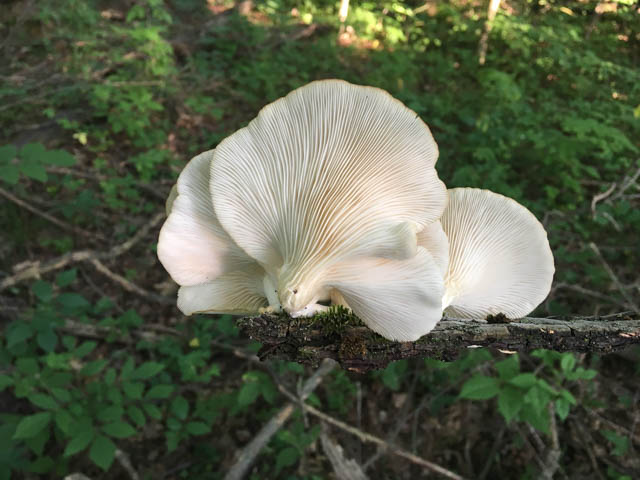
Hiratake mushroom.
Hiratake, also known as oyster mushrooms, comes in various cultivated varieties that primarily grow on dead trees and broadleaf tree stumps. Taste-wise, they offer a flawless fusion of a subtle seafood-like flavor, an earthy aroma, and a delightful hint of sweetness.
Additionally, these mushrooms boast a crunchy and thick texture, making them an excellent option for sautéing in butter or adding to mouthwatering stir-fries. They can also be seared, oven-roasted, baked, or broiled, opening up endless possibilities for culinary creations with these tasty fungi.
Enoki (榎茸)
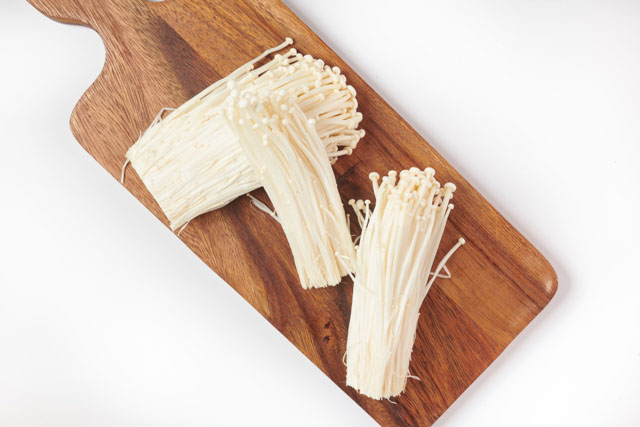
Enoki is a common mushroom to put in Japanese pot style dishes.
Beyond being a Japanese favorite, Enoki mushrooms enjoy widespread popularity in East Asian cuisine. This cultivated mushroom boasts a delightful crunch and mild, fruity flavors. As they easily absorb broth, these white fungi have become a star ingredient in Japanese hotpots. They also shine in soups like Sukiyaki and Nabe, not to mention some tasty appetizers like Aemono.
Eringi (エリンギ)
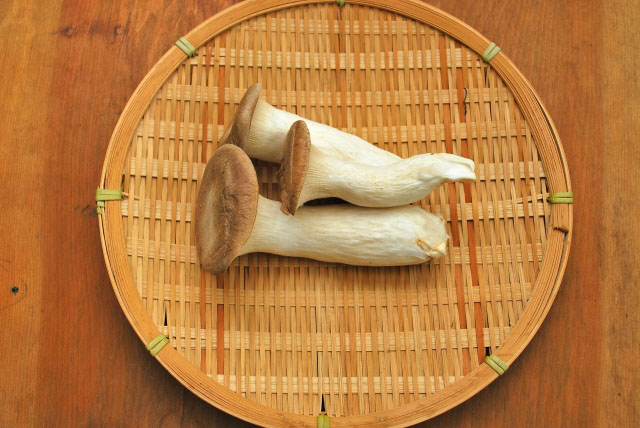
Eringi mushrooms, also known as King Oyster mushrooms, enjoy a cherished place in the culinary world. These sizeable oyster mushrooms have a firm texture and a delightful, almost seafood-like flavor, offering endless possibilities in the kitchen. They boast a thick, meaty stem that's usually sliced and incorporated into delicious sautéed or grilled dishes.
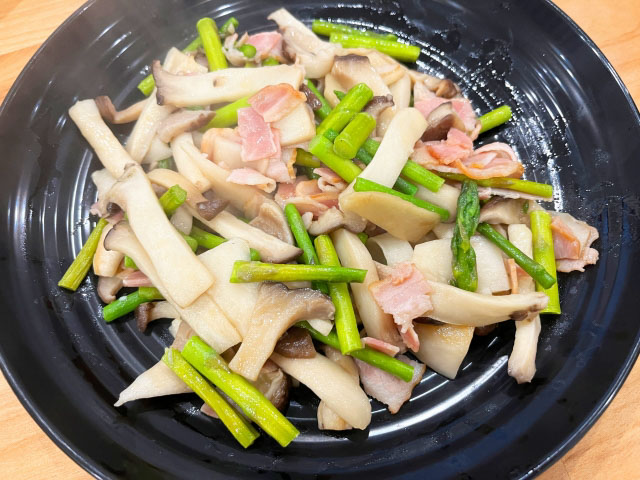
Eringi itame or Eringi fry in English.
Bunashimeji (ブナシメジ)
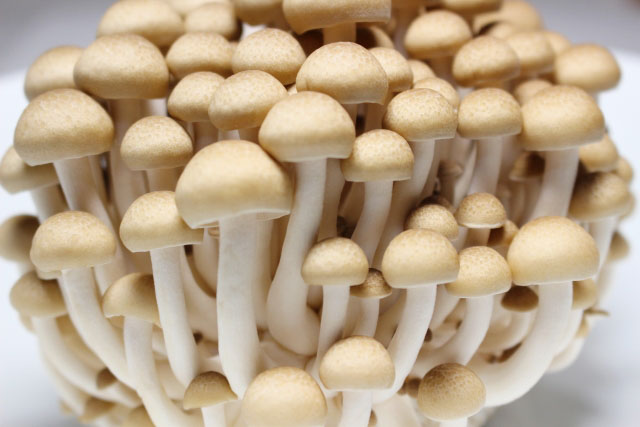
Native to East Asia and a cherished part of Japanese cuisine, Bunashimeji mushrooms are a group of fungi that grow in groups, showcasing long stems and rounded caps. Their taste is a delightful blend of nutty goodness with a hint of buttery flavor.
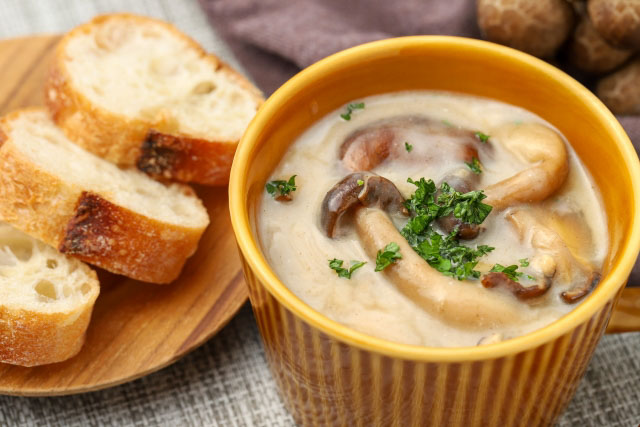
Shimeji can be used in a variety of dishes. Here in a cream soup.
The best part is that even after cooking, these mushrooms maintain their firmness and a satisfying crunch, making them the perfect choice for adding texture to dishes. You can enjoy these little caped fungi in any way you like - be it a simple, straightforward sauté or a delicious addition to stir-fries and ramen!
Nameko (滑子、なめこ)
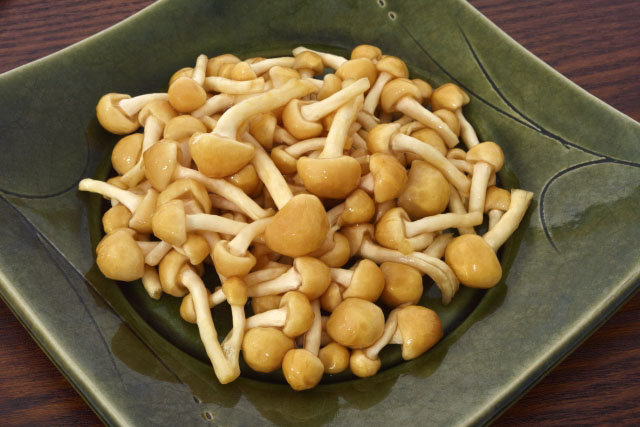
Nameko mushrooms is another very common sight on the Japanese dining table.
Nameko mushrooms, deriving their name from the Japanese word "numerikko" meaning "slimy mushroom," are known for their vibrant orange color, small caps, long and slender stems, and of course, their shiny gelatinous covering. While their slimy texture appeals to many, not everyone will particularly enjoy it, especially those who are not fans of okra (better to steer clear!).
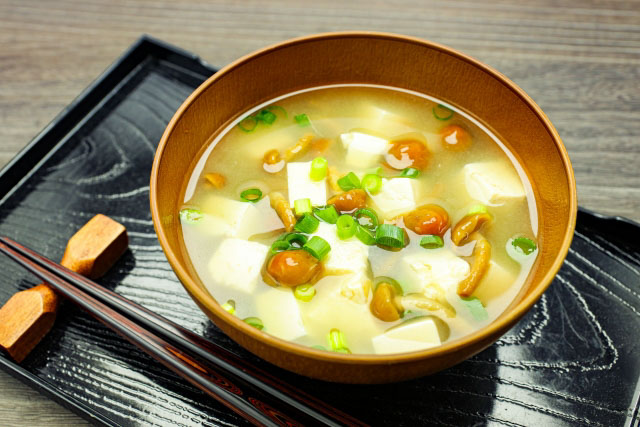
Nameko is common to use in the Japanese staple food miso soup.
Their earthy flavor is complemented by a subtle fruit-like taste, but the real standout feature lies in their intriguing aroma, reminiscent of butterscotch or cashews that earns them the nickname "butterscotch mushrooms."
Now, don't you think mushrooms are absolute marvels, thriving in damp, dark conditions and magically sprouting from the earth? They definitely taste like wonders too!
About The Writer
Meet Mariam - a freelance writer with a lifelong love for cooking, beauty, and Anime, starting from the tender age of six. Now, with boundless creativity and determination, she aims to deliver the most valuable content for readers to offer them a glimpse into her passions in life.

